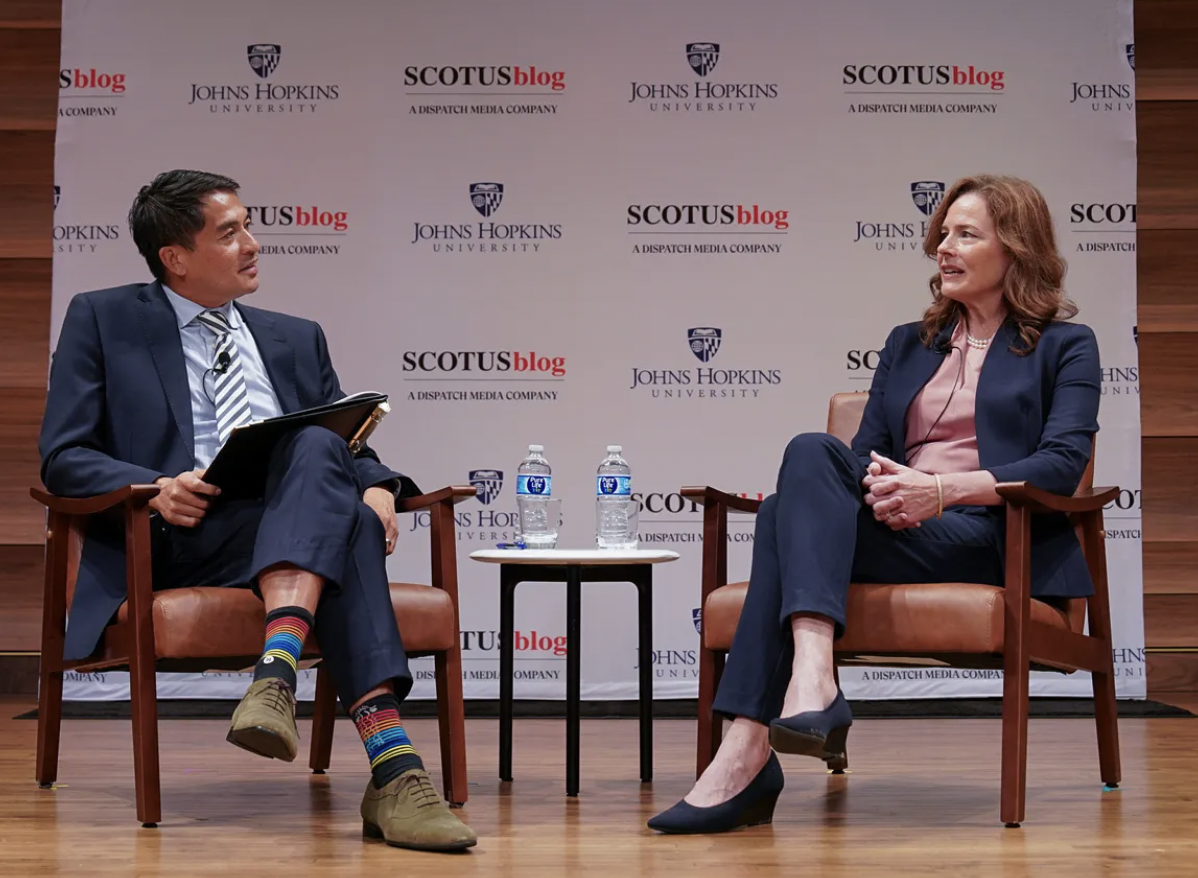Justice Barrett Gives a Reasonable — But Unconvincing — Answer About Why She Doesn't Explain Her Recusals

Judge Bumatay and Justice Barrett (Courtesy: The Dispatch)
By Gabe Roth, FTC executive director
Answering a question from Ninth Circuit Judge Patrick Bumatay — who allegedly has a burner account on X; did he get the question from us? — Justice Barrett told those gathered in D.C. for the inaugural SCOTUSblog Summit Thursday that she doesn’t explain the reasons for her recusals in part due to security concerns and in part due to the fact that explanations “veer from past practice.”
On the latter point, it’s true that during the last 120 years, up through 2023, the justices didn’t explain their recusals. But that wasn’t always the case, as there was a period in the late 19th century and early 20th century where recusals were explained, albeit briefly.
On the former point, Barrett described some of the situations that could lead to recusal, from “owning even $1 in stock” in a party to one’s “personal relationships,” their “deeply held convictions” or how a case or petition may implicate the work of a justice’s family member or friends.
Barrett mused that articulating the exact reason for a recusal, especially in the friends-and-family context, might imperil the safety of those individuals.
When assessing her views, which run counter to what we’ve called for, that perspective is, of course, worth taking into account.
The problem from my perspective is two-fold. First, in practice, the big Barrett recusal of OT24 was in the Oklahoma religious charter school case, and it’s believed to have occurred due to the fact that (a) Notre Dame Law Prof. Nicole Garnett worked on the case at an early stage, (b) she and Barrett are close and (c) there was some conversation or interaction about the case between the law prof. and the justice.
We already knew about the close relationship between the two from what the Garnetts have written and said. So Barrett appending the words “see 28 U.S.C. §455(b)(1)” following the standard “Justice Barrett took no part in the consideration or decision of this petition” would count as the much sought after recusal explanation and wouldn’t imperil anyone.
Plus, the two justices who currently do explain their recusals, Kagan and Jackson, aren’t doing much more than citing §455, though both justices also cite the associated section of the SCOTUS Code of Conduct.
A short explanation-slash-citation like that is what we envisioned when we got recusal explanations included in a 2018 GOP-led bill and a 2022 Dem.-led bill, as we wouldn’t expect a paragraph following in recusal-noting order when there are 5,000 SCOTUS petitions, with between 75 and 175 recusals, each term.
Second, if there were a time when a recusal explanation might somehow imperil someone, then it’d be fine for the justice not to offer an explanation. But again, such an example would be exceedingly rare.
By my count, only four of the justices’ 83 recusals from OT24 and two of 127 from OT23 implicated family member or a personal relationship.
So we’d advise the justices to give an explanation the 95 to 99 percent of the time those conditions aren’t met and maybe rely on the catch-all category, 455(a), in the rare instances where there’s a safety concern.
In the end, it’s my belief that a justice taking the extra step to work out what exactly the conflict is and where in the recusal statute it’s based is a worthwhile practice — one that helps ensure the justices are periodically flexing their ethical muscles.